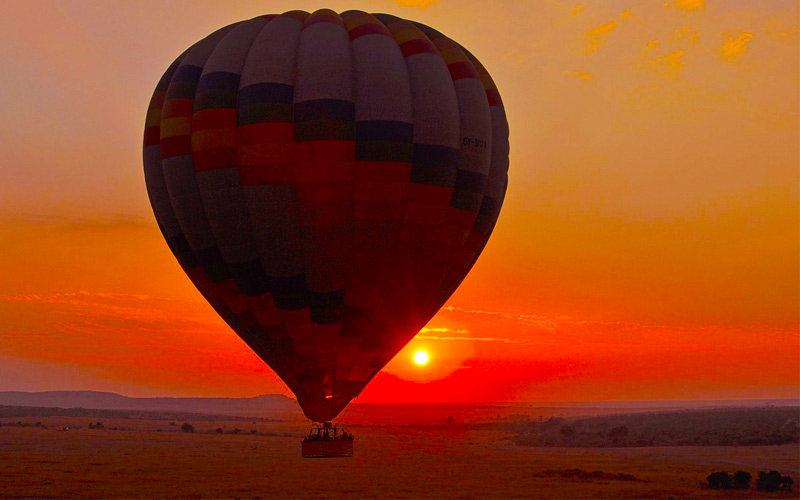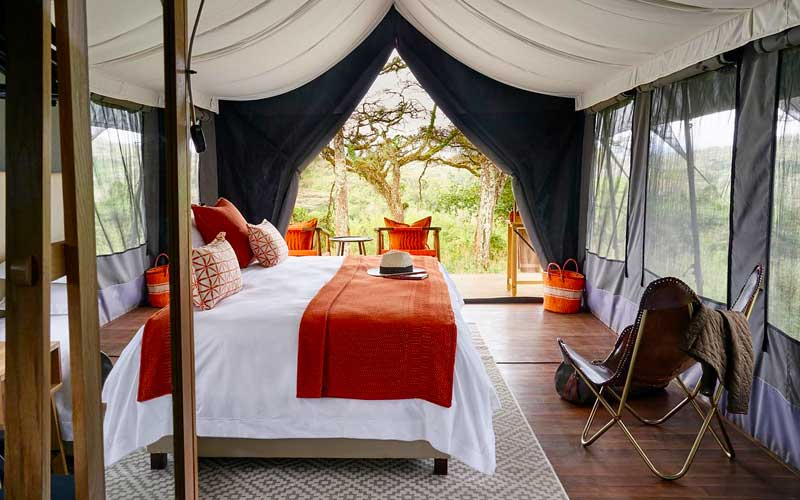From the spectacle of watching millions of wildebeests trek across the country’s golden grasslands to the thrill of its unprecedented predator sightings, Tanzania is home to one of the densest wildlife populations on earth.
Its animal sightings are matched only by the habitats they live in – whether it’s the sight of Mount Kilimanjaro in all its glory, the palm-fringed beaches of Zanzibar, or the incredible Serengeti plains or Ngorongoro crater (the largest inactive volcanic caldera on earth) – there are so many things Tanzania has to offer.
I've done several safaris in East Africa over the years - from cooking my own meals in a tent in Lake Manyara to lounging on a comfy deck chair in Tarangire.
Planning your dream safari can be overwhelming, so I'll give you my best hacks for choosing your next and best safari in both Tanzania and Kenya.
My Quick Takeaways:
Planning the best safari in Tanzania? Here's what you need to know at a glance:
- Great Migration: Witness millions of wildebeest, zebras, and gazelles traverse the Serengeti in a breathtaking annual journey.
- Diverse Ecosystems: Explore varied landscapes, from the vast plains of the Serengeti to the unique Ngorongoro Crater, each offering distinct wildlife experiences.
- Abundant Wildlife: Tanzania boasts one of the densest wildlife populations on earth, providing unparalleled opportunities to see the Big Five and more.
- Scenic Backdrops: Enjoy iconic vistas, including views of Mount Kilimanjaro and the palm-fringed beaches of Zanzibar.
- Tailored Experiences: Safaris range from budget-friendly camping adventures to luxurious lodge stays, catering to various preferences and budgets.
For a full breakdown, check out my complete article! Let's roll.
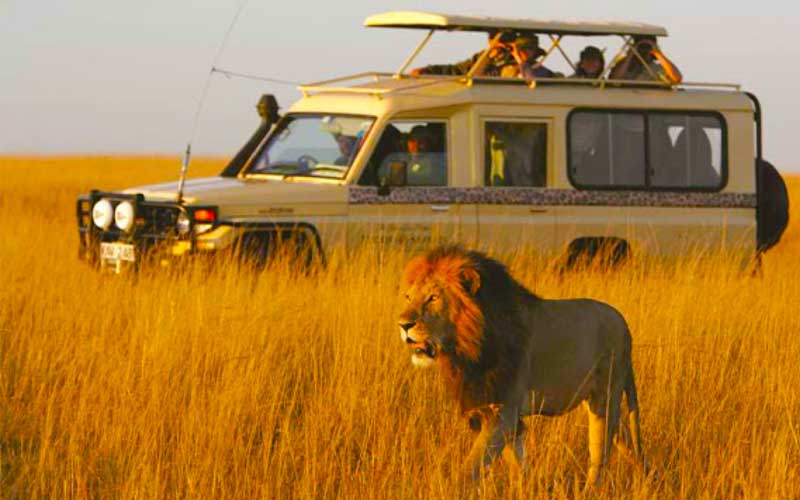
Plan your Safari experience
Check out these amazing deals on epic safari experiences now.
Best Safari in Tanzania FAQs
Which country is better for a safari - Kenya or Tanzania?
Tanzania is a better safari destination than Kenya for several reasons:
- It's a bigger country and has less tourists than Kenya
- Tanzania has more national parks and game reserves than Kenya
- The amazing Serengeti is in Tanzania and provides the best vantage point to see the great wildebeest migration year-round
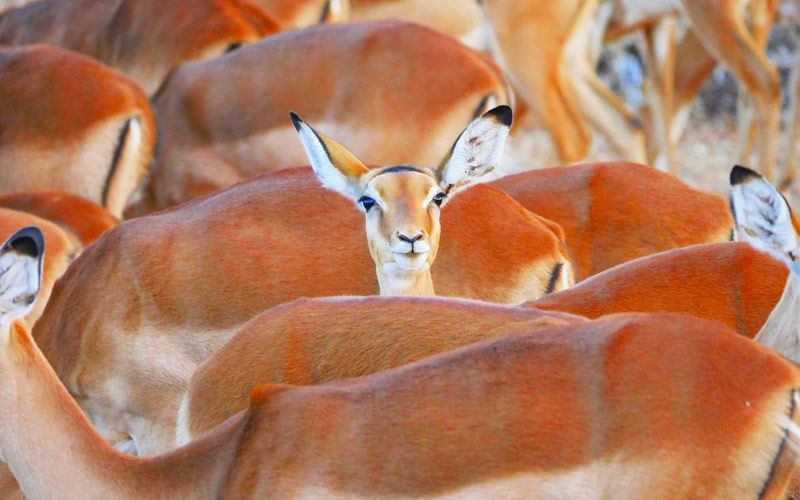
Witnessing The Great Migration – Kenya or Tanzania?
Understanding the pattern of the migration will help you decide where you’d like to witness it most.
In general, the migration tends to be in Tanzania in the Southern Serengeti for the calving season from February to mid-March. From June-July, the herds can be spotted in the park’s Western Corridor as they gather near the Grumeti River.
From August-September, the grazers move into the Northern Serengeti and Kenya’s Masai Mara National Reserve.
During this season you have the chance of witnessing the famous river crossings across the crocodile-infested Mara River. The sweeping herds then head back down to the Southern Serengeti, and the cycle starts again.
Here's a handy map of the Great Migration timeline through both Tanzania and Kenya:
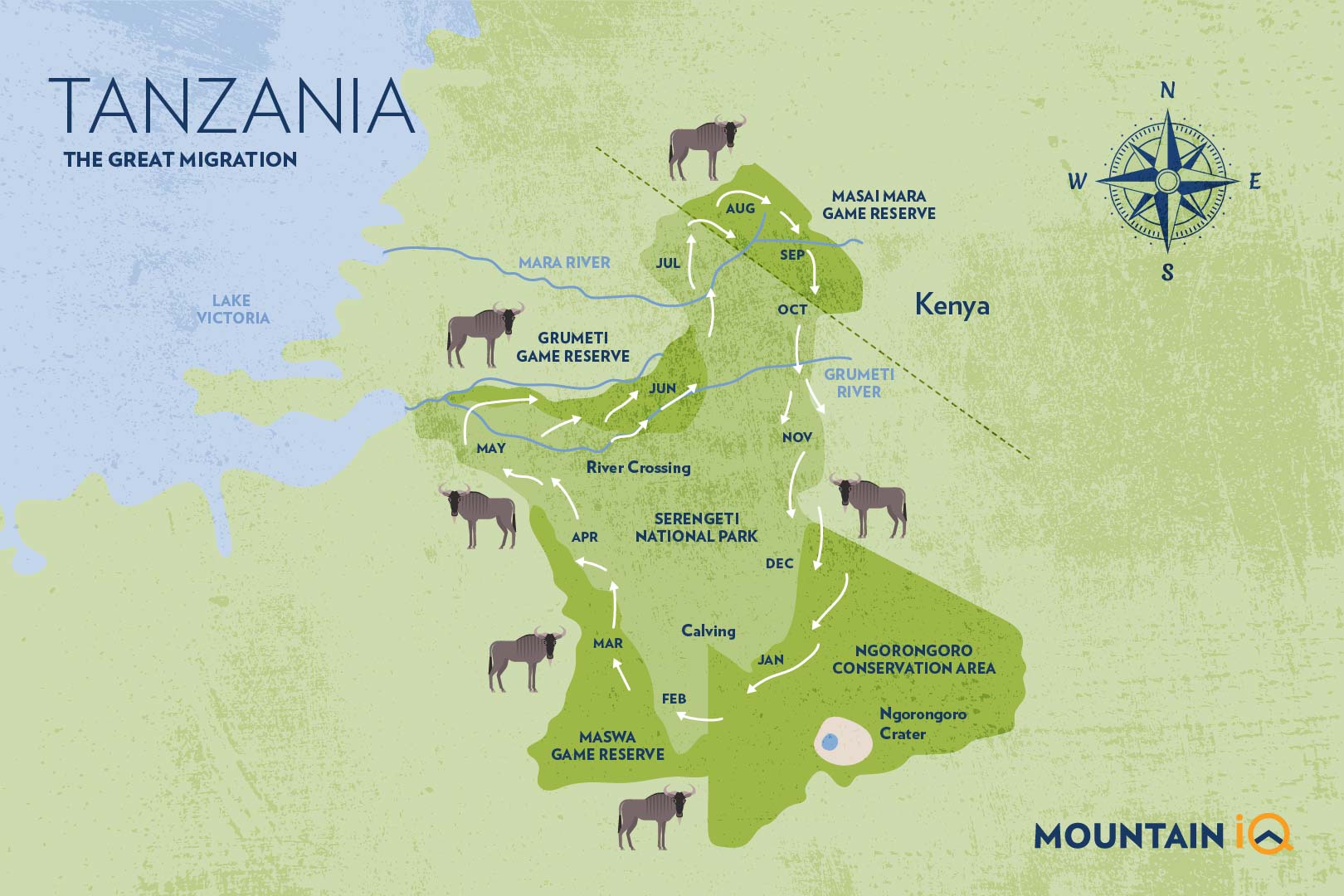
Besides the Great Migration, there are other world-renowned aspects of both Kenya and Tanzania discussed below that will help you choose where to travel for your dream African safari.
Here's a handy spreadsheet with more info on Kenya's most popular and lesser known national parks:
Most Popular | Unknown Gems |
|---|---|
Visit the open savannahs of the Masai Mara, home of the Masai warriors and end-point of the wildebeest migration. | Tsavo National Park is so huge that it is divided into two massive conservation areas - Tsavo East and Tsavo. |
Explore Amboseli National Park, which is best known for its unique elephant herds. | Meru National Park was made famous by Joy Adamson and her lions. |
Enjoy an aquatic safari at the conservation areas located along the Great Lakes route like Lake Nakuru, Lake Naivasha and Lake Victoria. | Aberdare National Park has a good number of black rhinoceros and renowned for its conservation efforts in this regard. |
Enjoy excellent hiking trails at Samburu National Park with its drier and rockier landscape. |
For more info, read my guide about choosing between visiting Kenya or Tanzania.
Which tour? Here are 5 Serengeti safari tours I highly recommend:
- Group Camping Safari that includes Tarangire and Ngorongoro (4 days)
- Budget Serengeti Safari (5 days)
- Scenic Northern Tanzania Safari (7 days)
- Serengeti Trail that includes Ngorongoro (8 days)
- Best of Kenya and Tanzania (incl. 6 national parks) (12 days)
See more Serengeti safari deals.
When is the best time to visit Tanzania and Kenya for a safari?
Overall, the most popular times to visit Tanzania and Kenya for a safari is the dry season, which is from June to October. As East Africa’s driest season, this time of year has the most predictable weather and provides ideal safari conditions.
As the rain subsides and mighty rivers become shallow pools, Kenya and Tanzania’s national parks truly come to life.
Thick vegetation thins out and animals congregate around scattered sources of water, giving safari-goers the prime conditions to spot wildlife.
While early mornings and evenings might be cold, the temperature during this season is fairly predictable.
Thermometer readings are often around 23°C/73°F, reaching a high of 28°C/82°F in the coastal areas.
Many visitors prefer the moderate dry season over the hot, humid and rainy summer months. Another benefit to consider during the dry season of winter is fewer mosquitos and a smaller chance of catching malaria.
There is, however, the risk of an occasional cold front in July when temperatures can reach close to freezing. The five-month window also draws the biggest crowds, which is the biggest disadvantage of the dry season.
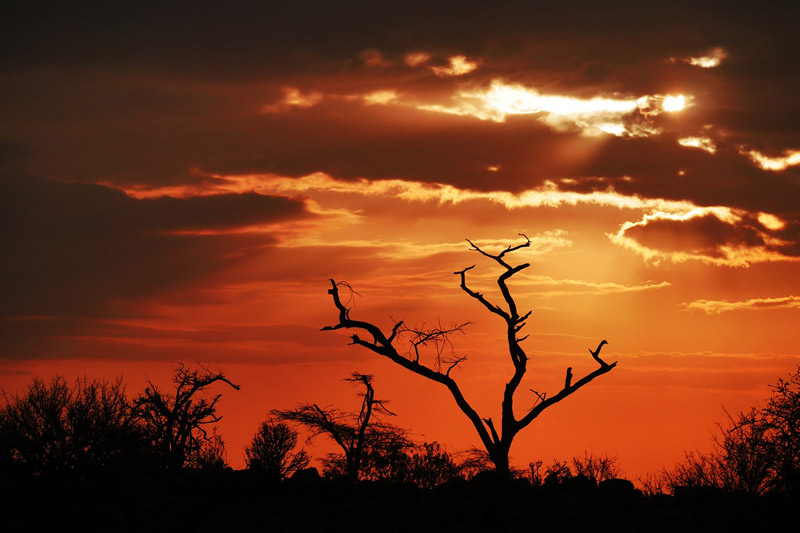
How much does a Tanzanian safari cost?
A safari in Tanzania can cost anywhere from US$200 per day per person to over US$1,000 per day depending on the type of package you choose.
These quoted costs include transport, camping or lodge accommodation, the majority of meals, and activities.
A Tanzanian safari is a fantastic experience, but budget restraints often keep your dream destination from ever being ticked off.
That's why I would recommend getting a safari package. It won't be cheap, but tour packages often save time and money when compared to the process of renting a car, paying park entry fees, and navigating the local roads on your own.
Many parks in Tanzania are world-renowned and reserve the right to charge as they see fit for the experience of entering the reserve.
Some of the best safari companies also operate in very remote areas and need to be fully prepared to make a trip into deepest Africa as comfortable as possible.
With that being said, there are many ways to cut costs when planning your trip – like choosing the best time of year for off-season deals, the right kind of transport, and the most cost-effective accommodation.
Here is a complete breakdown of typical safari costs (per person) that you can expect to pay for both Tanzania and Kenya:
Kenya | Tanzania | Combined | |
|---|---|---|---|
Budget Safari | $120-$250 | $285-$340 | $250-$350 |
Mid-Range Safari | $375-$600 | $500-$725 | $450-$600 |
Luxury Safari | $1,000-$1,600 | $1,250- $1,850 | $1,300-$1,900 |
Read more of my tips for creating a planning a unique and affordable safari in Tanzania.
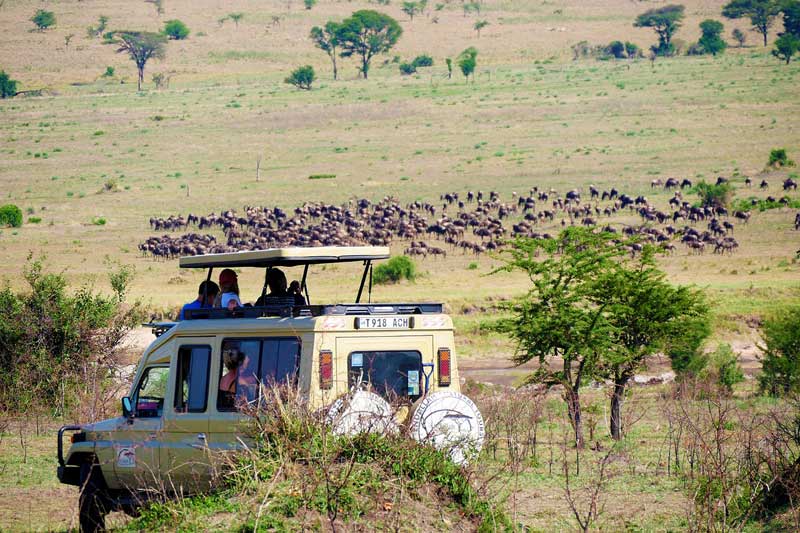
When can I get the best rates and perks for a safari in Tanzania and Kenya?
You can get the best rates and perks for a Tanzanian safari in the wet season, which is from November to May. This is because tourists are less inclined to go on safari when the weather is wetter and there is less wildlife to view.
With that said, the dry landscapes of Tanzania and Kenya are transformed into a lush, green wonderland in the wet season.
Temperatures increase during this period and usually range between 24°C/75°F and 27°C/81°F, reaching highs of 30°C/86°F along the coast.
There are two types of rainy periods in this season:
Short rains (November-December): Afternoon thunderstorms are often expected to take place, but safaris are unlikely to be impacted. For this reason, the short rainy season is still considered an excellent time to plan a trip to Tanzania or Kenya.
The first two weeks of December are considered a highly underrated time to visit.
With many travellers flying to East Africa for the festive season, the lower demand over early December can result in good deals and special off-peak rates.
The landscape will be spectacularly lush after the November rains and safaris can be planned around the usual afternoon showers.

Plan your Safari experience
Check out these amazing deals on epic safari experiences now.
Long rains (March-April): The long rains usher in the peak of the wet season. While it may still be a good time to visit Tanzania or Kenya, your trip will be impacted by the amount of rain and the type of conditions the area receives that year.
Tourists who find hot, humid conditions unpleasant should preferably avoid this season.
If you’re up for an adventure, there are major advantages of travelling here during this time.
Prices are reduced dramatically and with crowds being dispersed – you’ll have thrilling wildlife sightings all to yourself.
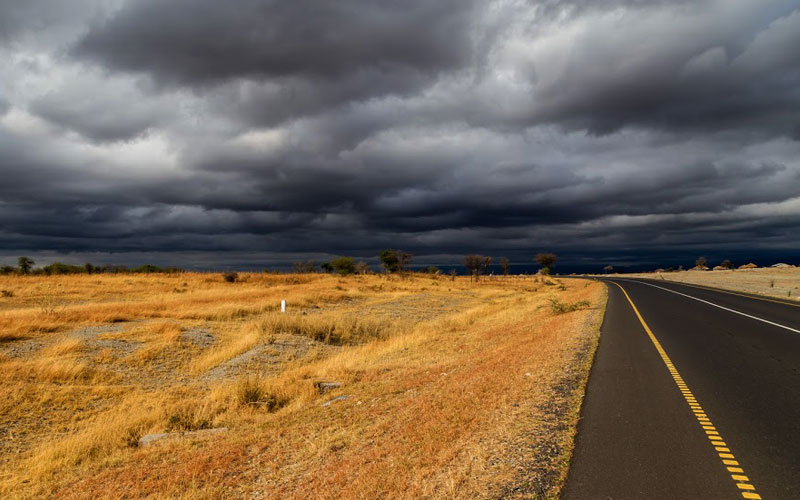
Between the Rainy Seasons (January- February)
The start of the year is often a time that is overlooked by many people planning a trip to East Africa.
A dry spell usually takes place during this time between the end of the short rains and the start of the long rains.
The savannah is green and fewer visitors makes this an excellent time to avoid the crowds. Generally considered to be the ‘shoulder season’, festive season rates have dropped and Wildebeest calving season is about to begin in the Serengeti.
Many seasoned safari-goers rate the shoulder season as the best time to plan a trip to Tanzania or Kenya.
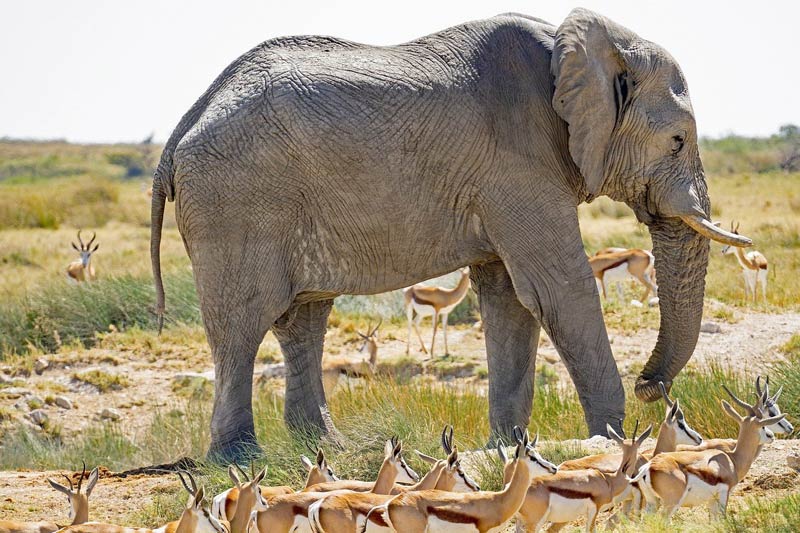
What are the best national parks to visit in Tanzania?
The best national parks in Tanzania are located along the Northern Circuit - Serengeti, Tarangire, Lake Manyara, Arusha and Ngorongoro.
This is because they boast some of the largest conservation areas with the most diverse wildlife populations.
Also, these national parks are the cheapest to travel to for tourists because they are located near functioning service roads and airstrips.
These factors make air and boat travels from popular destinations like Dar es Salaam and Zanzibar to conservation areas quick and convenient.

Plan your Safari experience
Check out these amazing deals on epic safari experiences now.
The best way to start planning your dream Tanzanian safari is by deciding which national parks you want to visit most.
Tanzania’s most popular drawing card is the Great Migration – an unimaginably spectacular event where over a million wildebeest move through the country’s rolling grasslands in search of ever greener pastures.
The country is also famously known for its diverse national parks – each one being completely unique and home to an abundance of wildlife.
There is the Northern Circuit, which covers the Serengeti, Tarangire, Ngorongoro Crater and Lake Manyara National Park; and the Southern Circuit, which includes the vast Selous Game Reserve and Ruaha National Park.
For the adventurous at heart, there is Tanzania’s wild, wild West. The south and west of Tanzania offer some of the country’s best-kept safari secrets - Gombe, Katavi and Mahale.
The parks in this area are more remote and some are accessed only by a chartered flight.
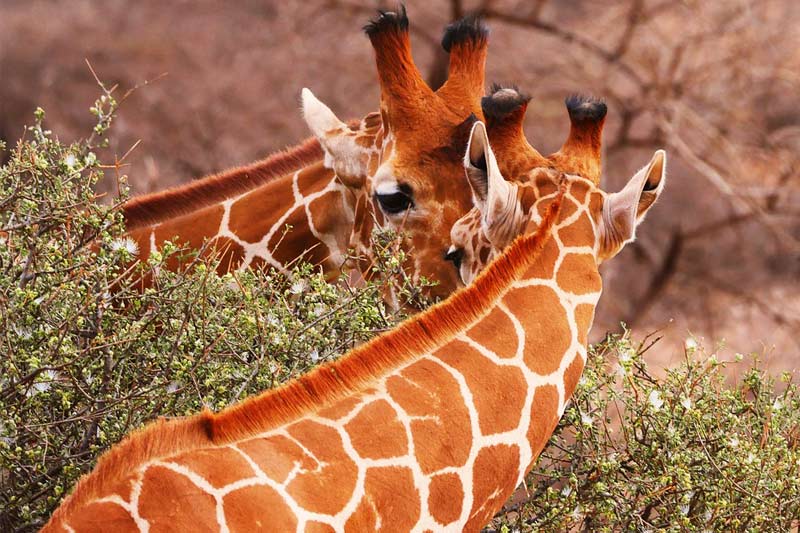
Best Parks to Visit in the Northern Safari Circuit
Serengeti National Park
The centrepiece of the Northern Circuit is the Serengeti – home to one of the world’s densest wildlife populations.
‘Serengeti’ is a local Masaai word that is used to describe endless plains – a perfect depiction of the park’s rolling golden grasslands.
While the main attraction of the Serengeti is the Wildebeest Migration, the park is an all-year-round safari destination with ample opportunity to spot the Big Five.
Ngorongoro Crater
A Northern Circuit safari is almost always accompanied by a visit to the Ngorongoro Crater, a wildlife wonderland nestled below a heavily-forested 600m volcanic rim that offers some of Tanzania’s best and most reliable safari sightings.
It is believed that before the iconic volcano erupted, it stood taller than the mighty Mount Kilimanjaro itself.
The top of the ancient volcanic cone collapsed after the loss of its underlying body of magma and ultimately formed what is now known as the largest inactive caldera on earth.
The Ngorongoro Crater is home to some 25,000 large animals and is the most densely populated area of mammalian predators in Africa.
The enclosed caldera floor is rich in minerals and teeming with life, making is one of Africa’s top safari destinations.
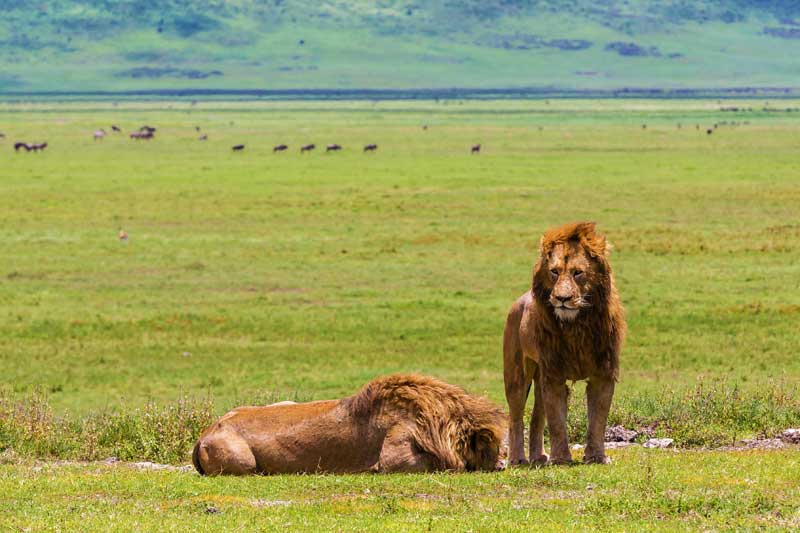
Lake Manyara
In the rush to see the Serengeti and its famous Ngorongoro neighbour, Lake Manyara can easily be overlooked.
The park takes up a mere 330 square kilometres of which 230 square kilometres are covered by the shallow alkaline lake.
The rest of the landscape boasts a remarkable mix of floodplains, acacia woodlands, and forests that supports an equally impressive variety of wildlife like the spectacular flamingos or tree-climbing lions.
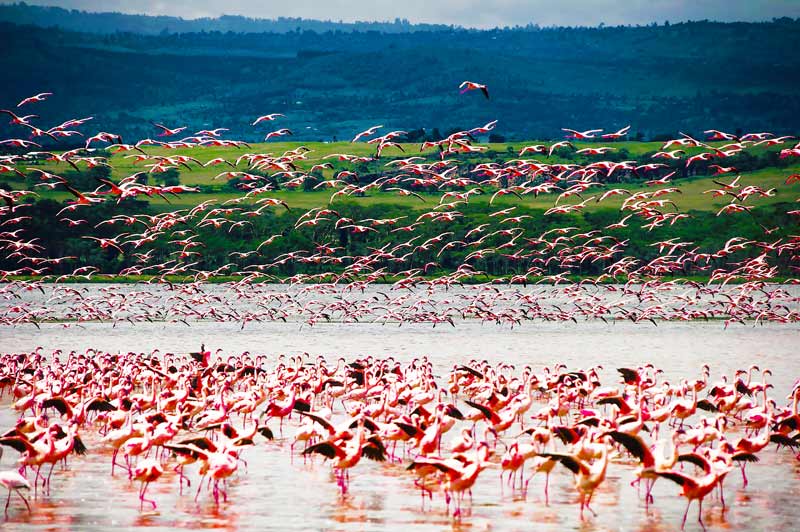
Tarangire National Park
As one of the untouched gems of Tanzania, Tarangire National Park sees fewer visitors than other parks on the Northern Safari Circuit.
In stark contrast to the small crowds of tourists is the park’s teeming wildlife population that at the right time of year is believed to deliver some of the best game viewings in Tanzania.
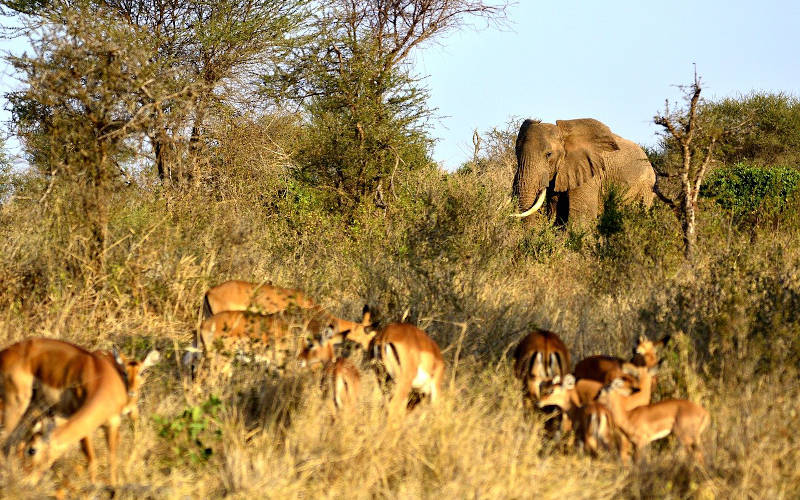
Best Parks to Visit in the Southern Safari Circuit
Selous Game Reserve
Standing out in terms of size is the Selous Game Reserve, which holds the title as Africa’s largest game reserve – nearly four times the size of the Serengeti!
The park’s stand-out features include its resident Big Five population and the mighty Rufiji River that fills the landscape with interconnected lakes.
Unlike Tanzania’s other parks, Selous offers the unique opportunity to experience guided walks and fly-camping.
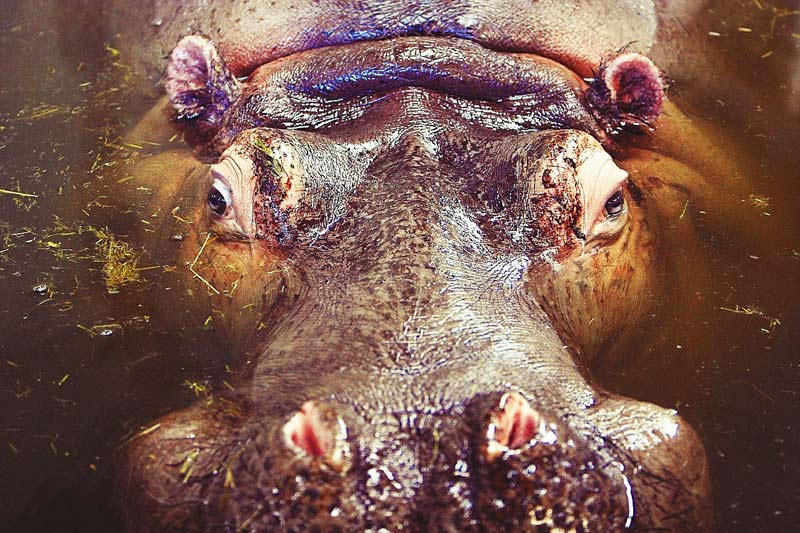
Ruaha National Park
Home to sweeping herds of antelope, all-conquering prides of large carnivores, and the country’s biggest elephant population – the Ruaha National Park is one of the planet’s last remaining vestiges for nature in its rawest form.
The Park forms part of the Iringa region and was called ‘Ruaha’ by the Kihehe people – a name that aptly means river.
The Great Ruaha River courses along the southern border of the park and is central to all life in the region, drawing people as well as wildlife to its banks.
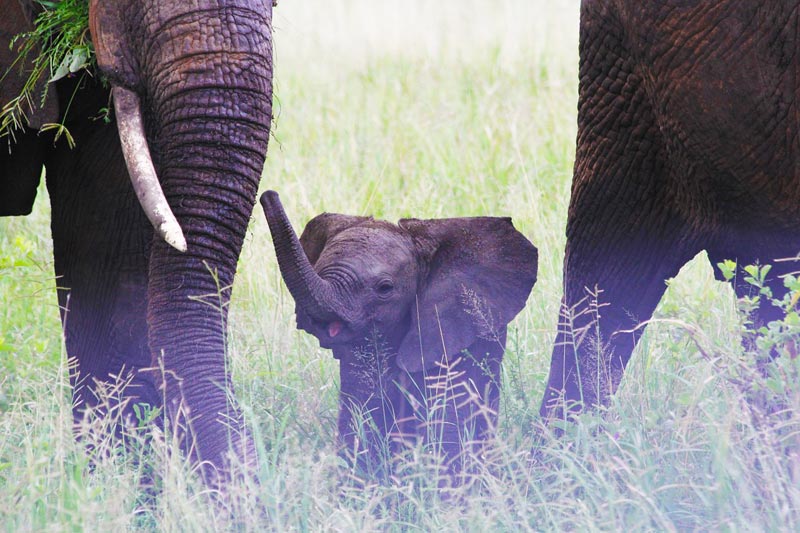
The Wild, Wild West of Tanzania
To the west of the park is the secluded Mahale Mountains, Gombe Stream and Katavi national parks.
The mostly inaccessible tracks that lead to these parks have deterred crowds of tourists and concealed some of Africa’s most iconic wildlife experiences.
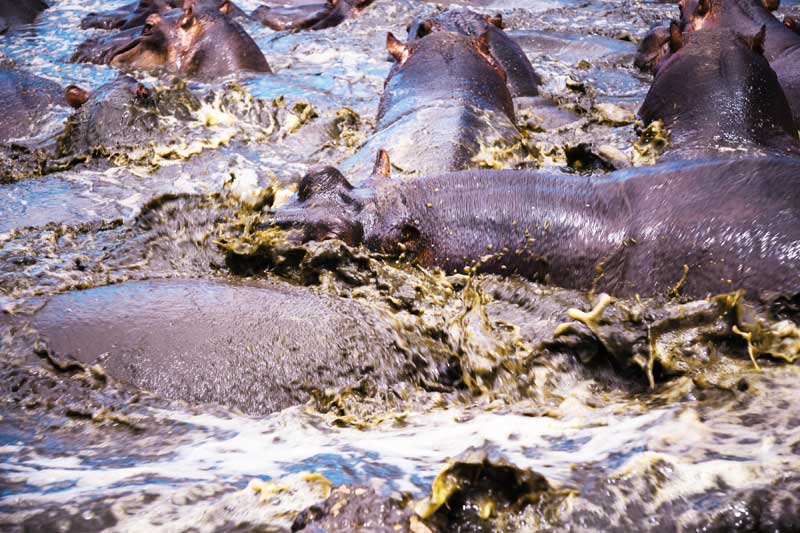
Katavi National Park
As Tanzania’s third largest park, Katavi National Park is comprised of approximately 4,471 square kilometres of everything from open grasslands and forests to floodplains and seasonal lakes.
As these floodplains retreat during the dry season, the sight of hippos by their hundreds cramming into dwindling pools is one of the main attractions of the park.
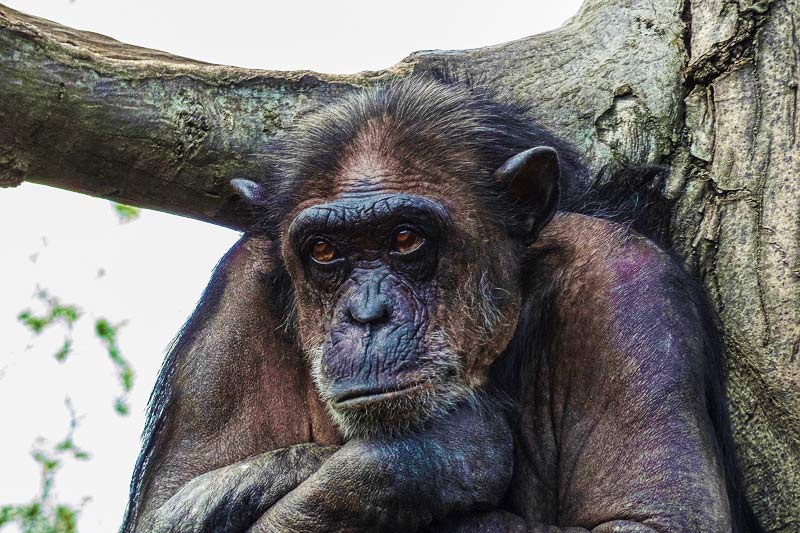
The Mahale Mountains and Gombe National Parks
What makes the Mahale Mountains National Park and the Gombe Stream National Park especially unique is that they don’t boast the usual Tanzanian safari suspects such as lions and elephants.
Instead, it is famously known for offering an enthralling opportunity to trek and get up close with its world-renowned population of chimpanzees.
Which tour? Here are 3 of my favourite Gombe and Mahale safaris I highly recommend:
- Budget Chimpanzee Safari (2 days)
- Gombe Chimpanzee Tour (4 days)
- Mahale Chimpanzee Tracking Adventure (4 days)
See more Western Tanzania safari deals.
What are the best locations for a Tanzanian beach safari?
The best locations for a Tanzanian beach safari by far are the illustrious beaches of Zanzibar, Pemba Island and Mafia Island.
These locations will offer you the rare opportunity to create the ultimate coastal safari getaway.
Also, Zanzibar and Pemba are regarded as some of the best and most idyllic tourist destinations in the world, which will make your wildlife experience more unique and memorable.
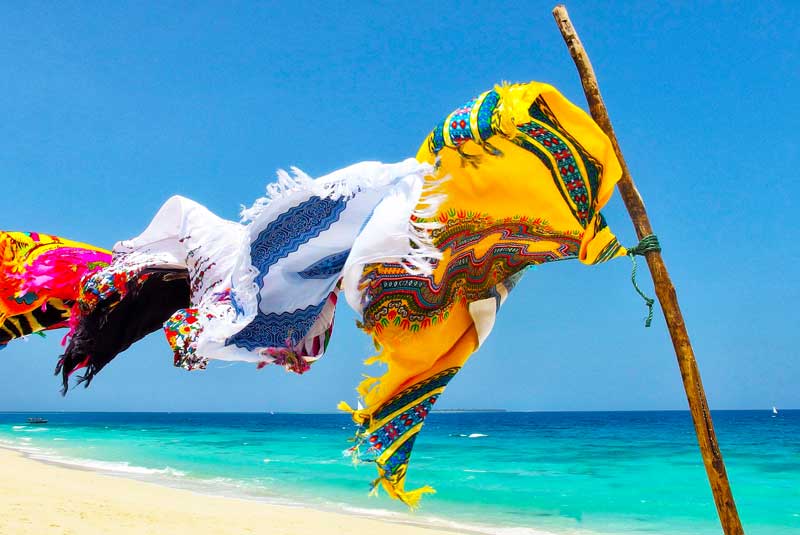
Zanzibar Archipelago
Zanzibar lives up to every high expectation that’s been placed on it.
The beauty of its clear, idyllic waters is matched only by the vibrant reefs below – a piece of paradise for every adventure-seeker that enjoys the thrill of diving or snorkelling.
Rich in more than just its natural beauty, Zanzibar’s cultural heritage, particularly in Stone Town, is truly captivating. Explore the little villages, spice plantations and remote beaches.
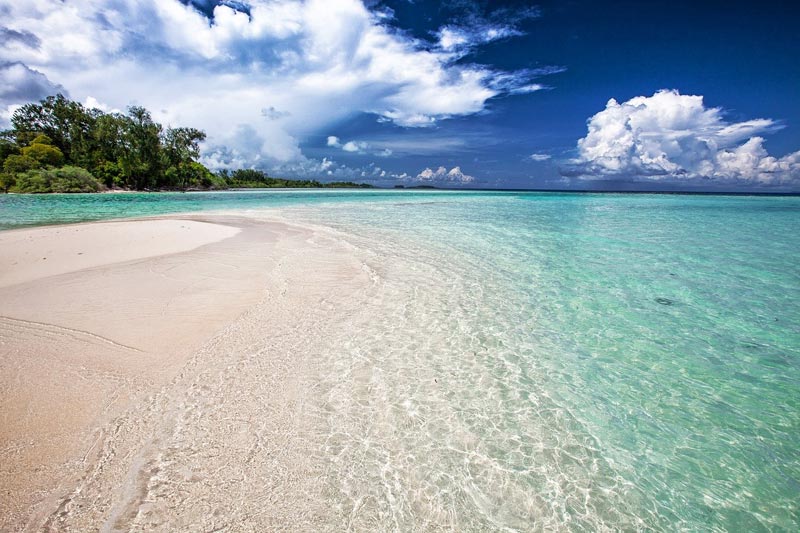
Pemba Island
Hidden in the shadow of Zanzibar is Pemba Island – an Arabic name that aptly translates to ‘the Green Island’.
While it may form part of the Zanzibar Archipelago, Pemba Island is unlike any of its flat, sand-strewn neighbours.
While most islands offer palm-lined beaches and azure waters, Pemba offers a seaside escape set against a lush, hilly landscape that’s teeming with life.
If you’re looking for an authentic island experience, Pemba not only offers a green wonderland begging to be explored but an underwater world that makes for some of the world’s best diving and snorkelling.
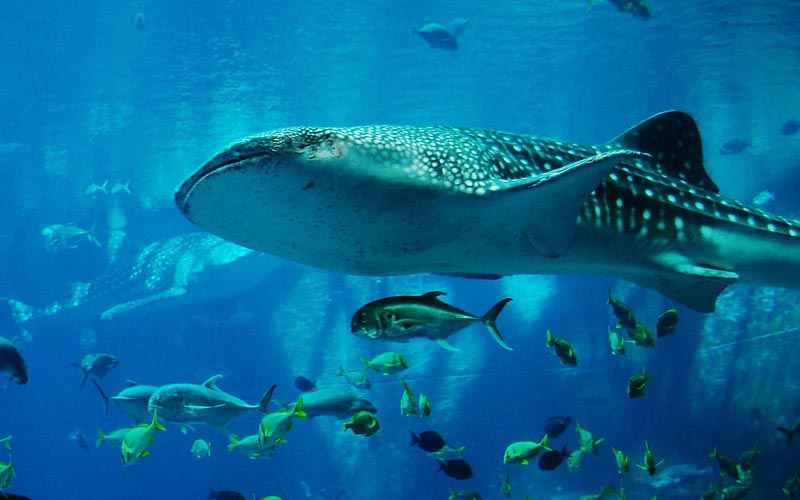
Mafia Island
Another one of Tanzania’s secluded, lesser-known islands is Mafia Island.
Head 160 km south of Zanzibar to discover an off-the-grid farming and fishing community. Mafia also boasts some of the best whale shark diving in the world.
The Mafia Archipelago prides itself in being the country’s first marine park that protects everything from the turtles that nest on its shores and resident whale sharks, to its unparalleled coral reefs.
Read our ultimate guide on how best to combine a safari with a beach trip in Tanzania.
Pro Tip for a Beach Safari: Generally, August and September are the best months for travellers who enjoy diving and snorkelling as water clarity is at its highest.

Plan your Safari experience
Check out these amazing deals on epic safari experiences now.
What makes a Tanzanian camping safari so special?
A safari through Tanzania is always special, but a camping safari arguably provides the most immersive experience into the great East African wilderness.
While the experience of being separated from the untamed elements by only a thin sheet of canvas may be daunting for some, others find the thought of being one with nature around them thrilling.
If you’re an adventure-seeker on a budget, the biggest advantage of a camping safari is without a doubt the cost.
Travellers can save hundreds of dollars without compromising in the slightest on realizing their wildest safari dreams.
Read more on the best options for an epic Tanzanian camping safari.
Guided Camping Safaris
The most intimidating part of a self-navigated camping safari for most travellers is the planning and logistics required, as well as lacking the right equipment.
If that’s the case, a pre-planned and guided camping tour ticks all the right boxes.
Nothing quite compares to the experience of pitching camp in places you would have never otherwise been able to find on your own.
Special campsites are bought on a bidding system by safari companies before the safari season, allowing access to some of the most unique and breath-taking locations on earth.
Where to stay? Here are 5 of my favourite safari accommodation options in Kenya and Tanzania:
- Talek Bush Camp (Masai Mara)
- Lake Nakuru Lodge
- Eco Camp (Amboseli)
- Mawe Camp (Serengeti)
- Serena Safari Lodge (Ngorongoro)
See more popular Kenya and Tanzania safari accommodation options.
How should I prepare for a Tanzanian safari?
After making your booking, you should prepare yourself for a Tanzanian safari by getting vaccinated.
There are a number of vaccinations that you should get before you travel. We recommend you check with your local GP or travel clinic which vaccinations you require.
Certain vaccinations are required to enter Tanzania including Diphtheria-tetanus-pertussis, Measles-mumps-rubella (MMR), Hepatitis A and polio. It is also highly advised to go on a course of anti-malaria medication and to pack some insect repellent.
Read more information in my guide to visas, vaccinations and medication.

Plan your Safari experience
Check out these amazing deals on epic safari experiences now.
My Final Thoughts
And there you have: Now you know how to plan the best safari in Tanzania. Whether you search for elephants, or interact with chimpanzees, this beautiful gem in Africa has something for everyone. What do you think? Let me know.

